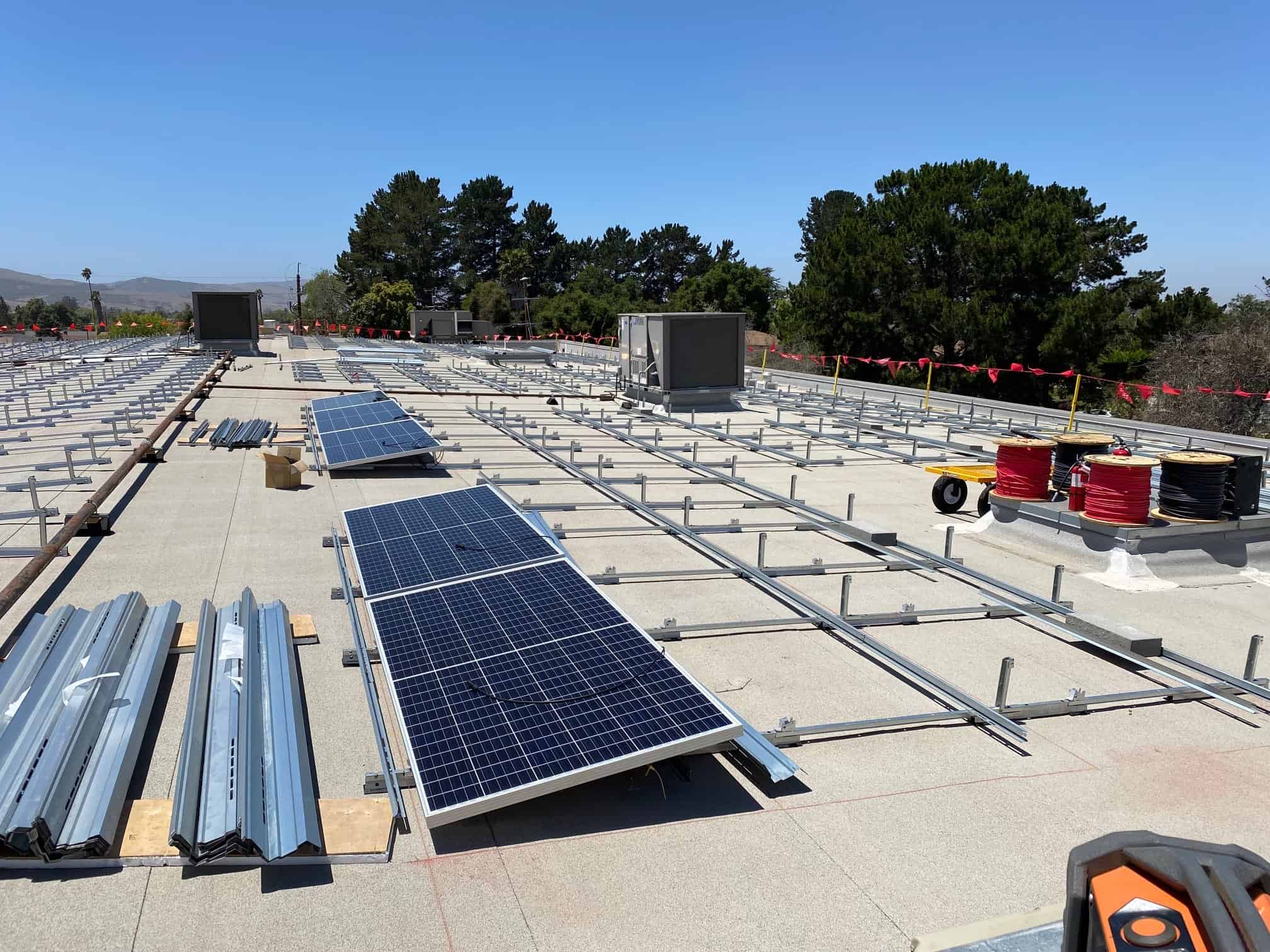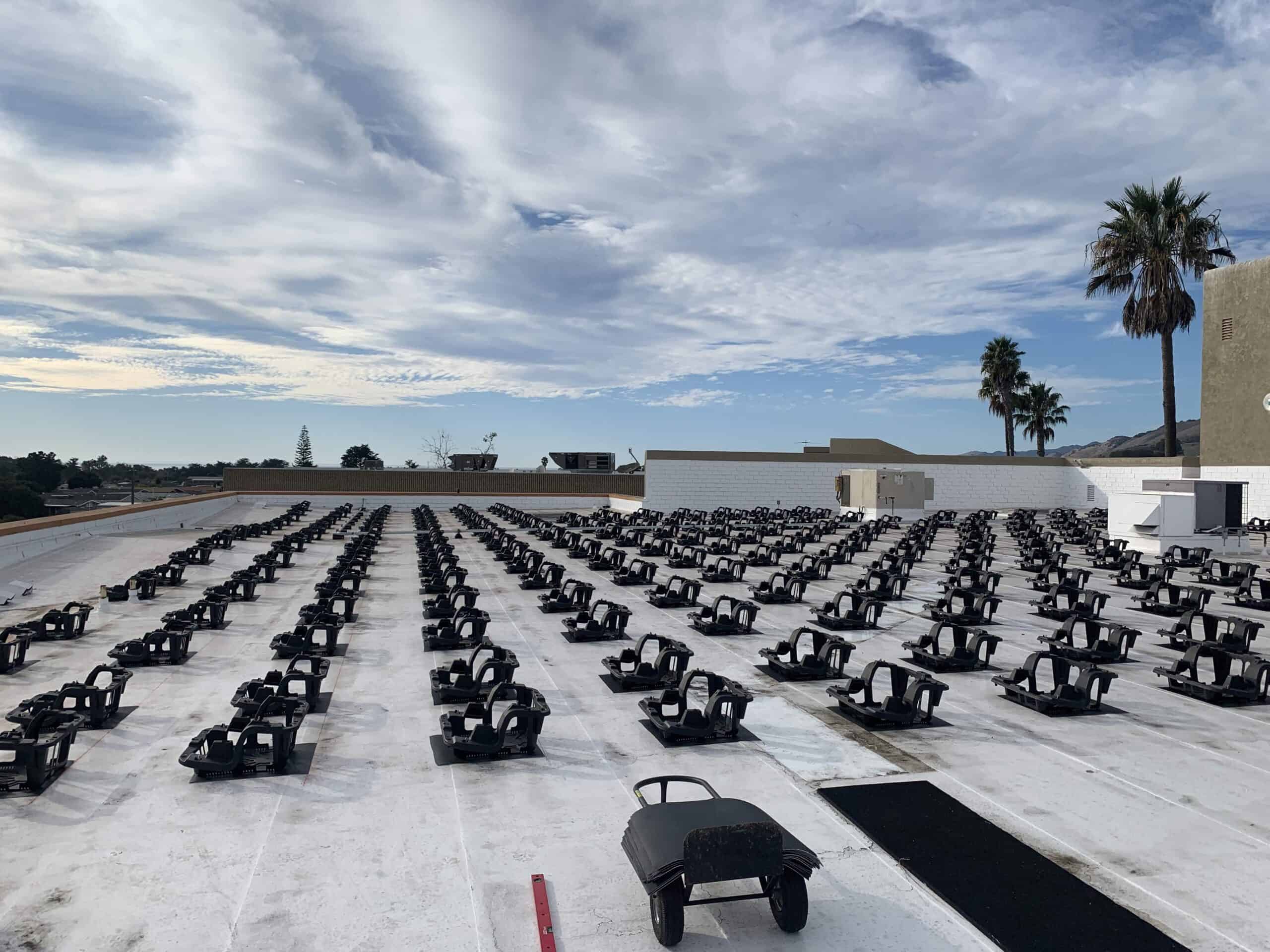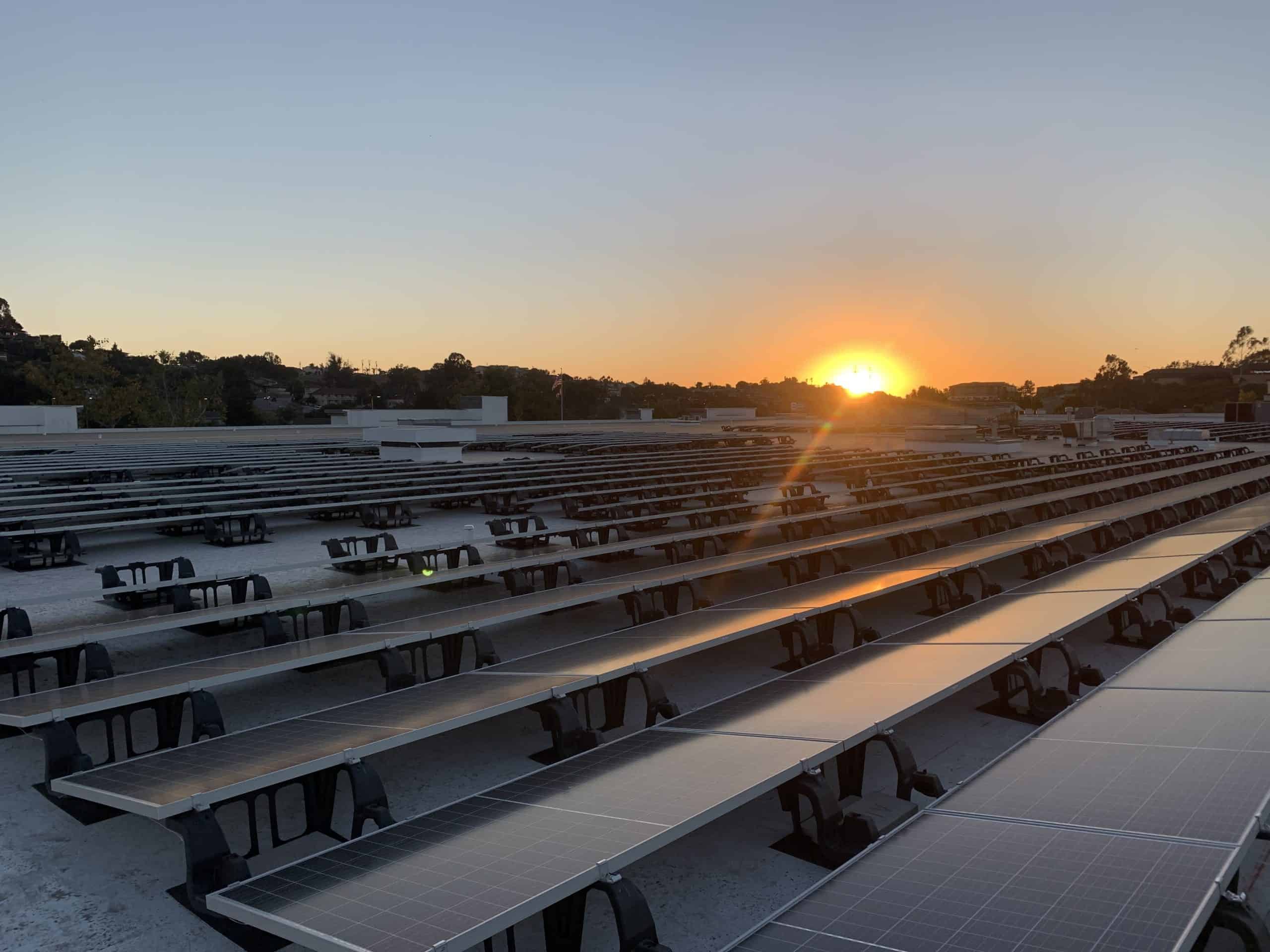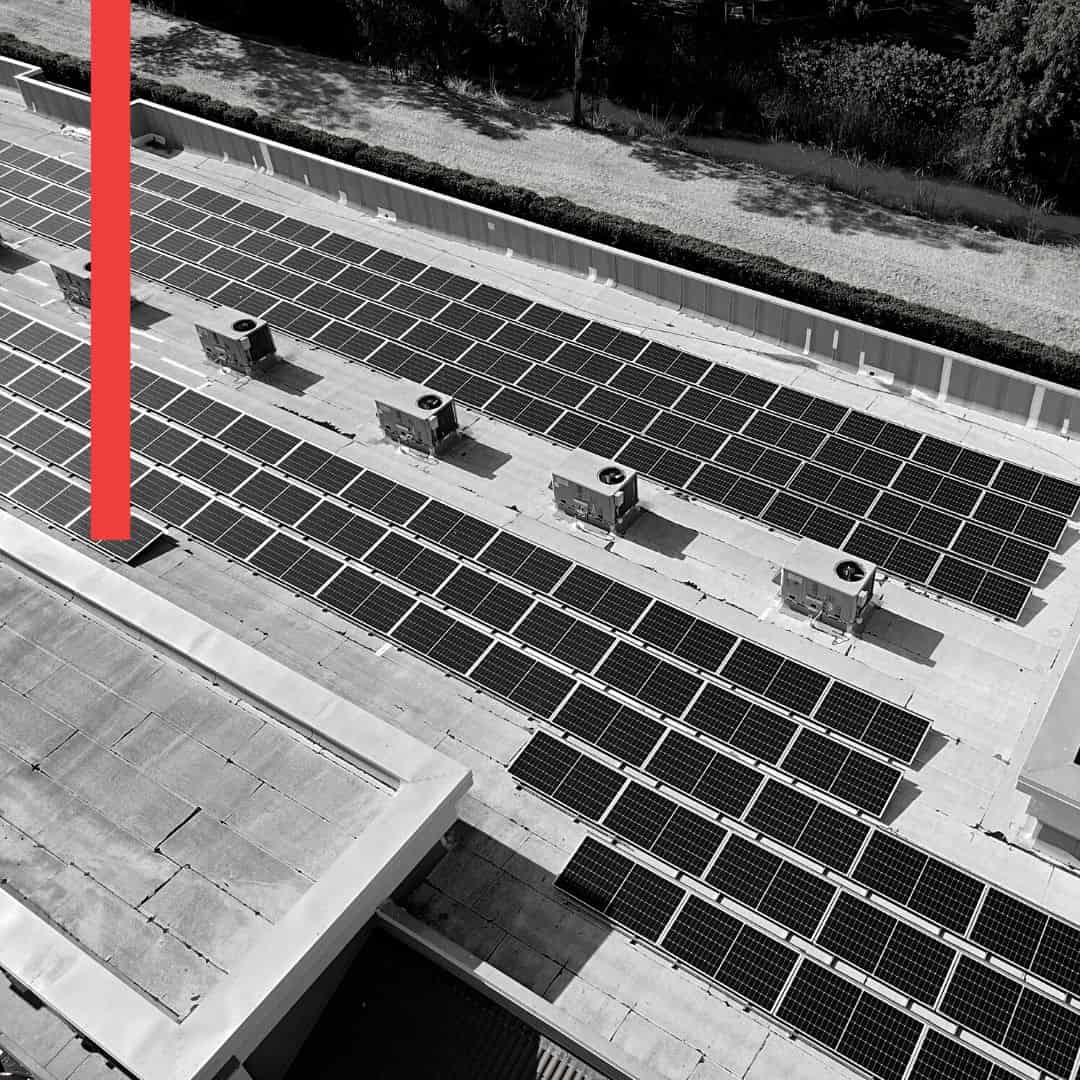As a commercial property owner, your roof is one of the most important investments you make. So we understand the concern when asked to consider solar. The good news is that solar is a mature industry with infrastructure in place across millions of projects worldwide, meaning that every imaginable problem associated with a rooftop installation has already been addressed.
In addition to the added revenue stream and higher tenant satisfaction that you get with a solar program, your roof is safe. We’ve rounded up the most common questions we get about installing solar panels on a commercial multi-tenant roof.
1 | Will a solar program damage my roof?
Generally, a solar installation will not damage your roof, especially on a flat roof. This is because they are installed using a ballasted system where racks are held in place with weighted blocks that require minimal or no roof penetration. Every good developer will bring a structural engineer to ensure that your roof can support the system weight.
In fact, a ballasted solar system will actually improve roof longevity. We all know most damage is caused by temperature change, think hot days and cold nights. These temperature variations cause expansion and contraction of roof materials resulting in cracking and warping. To mitigate this damage, most roofing experts recommend adding a layer to protect your roof from damaging UV light and temperature variation. Solar panels create this layer and protect the roof from both sun and col, increasing the longevity of your roof.
Bottom line: Solar systems will not cause damage to your roof and can provide a protective layer to increase roof longevity.

2 | Will a solar program impact my roof warranty?
Solar programs do not impact your roof warranty. Solar providers mitigate the risk by consulting with structural engineers and hiring a qualified roofing partner as needed.
There are several features to ensure a system is in compliance with any warranty terms:
- Slip sheets so that solar systems don’t lay directly on your roof
- Minimal roof penetrations, if any
- Weighted ballast systems installed with the oversight of a structural engineer
- Modular racking systems designed specifically for flat roofs

3 | What does the installation look like?
Mobilization begins with the arrival of palettes of solar panels, racking equipment, and the inverter. For a typical neighborhood-sized shopping center, all the equipment will fit in a couple of zircons. Cherry pickers or small mobile cranes are used to move equipment up to the roof. The roof is then swept clean of any leaves or debris.
The first step in installation is to put down a slip sheet that protects the roof from any contact with the racking system. Once the slip sheet is in place, metal racks and a ballast system are laid down to hold the solar panels in place. The solar panels are then mounted onto the racks and wired together. Lastly, an inverter is placed and conduits are run connecting the whole system to your main electrical panel. The inspector is called and the system is authorized for production.
The whole process is typically measured in days or a few short weeks.
The process will not impact your tenants or your roof’s integrity and will result in additional revenue, increased property value, and lower tenant utility costs.
4 | What if there is a roof leak? Will a system get in the way of repairs?
Solar systems do not cause roof leaks. But regardless of the cause of a leak, it is easy to fix even with a large solar array in place.
The solar panels are not actually laying on the roof, and walkways exist between the rows of panels to make it easy to access an area of concern. If a leak is not directly under a panel, the repair is trivial. If the leak is under a panel, that panel can be unclipped from the mounting and set aside for easy access.

5 | What if a future tenant needs to install an HVAC or new venting?
Solar panels are modular so they are easy to move, add, remove, or adjust. If a tenant needs part of the roof for a HVAC installation, it is simple to move panels to another location on the roof or remove a few panels altogether to free up that space.
For example, say you needed to put a new HVAC in the middle of the installation. You would need to remove enough panels to create a walkway to the new HVAC location and runaround space for clearance. If there was space available at the edges of the system you could simply move those panels to create a new row and plug them back in. It’s actually much easier than installing the HVAC.
Summing it up
Solar is a mature business. There are millions of installations worldwide and every imaginable problem associated with a rooftop installation has been handled many times over.
You can be assured that roof damage is a negligible risk and if something happens down the road, it’s easy to fix. Plus, the modular nature of solar allows for changes over time.
Bottom line: the benefits to you and your tenants far outweigh the risks of roof damage.
Are there questions we didn’t answer?
Send us your questions and one of our US based customer services representatives will be in touch.
